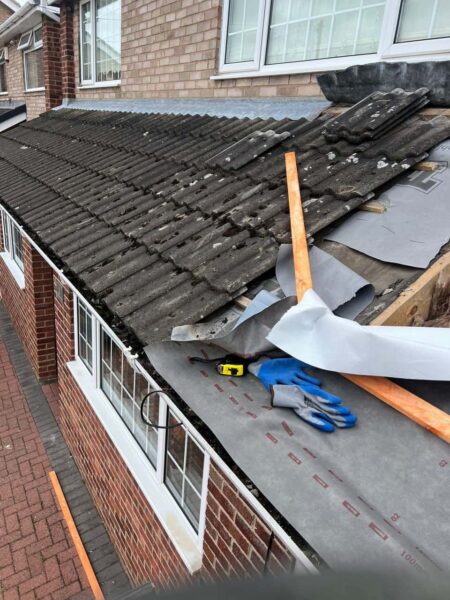Weathering the Storm: Tips for Designing Flat Roofs for Resilience to Extreme Weathe
Introduction: Extreme weather events, including heavy rainfall, high winds, and intense heat, pose significant challenges to flat roof structures. Designing flat roofs to withstand the rigours of extreme weather requires careful planning, attention to detail, and the selection of durable materials. At KLJ Roofing Towcester, we recognise the importance of resilient roofing solutions that protect buildings and occupants from the impacts of severe weather. In this blog post, we’ll share valuable tips for designing flat roofs that can weather the storm and withstand the test of time.
Choose High-Quality Materials:
- Selecting high-quality roofing materials is crucial for ensuring the resilience of flat roofs to extreme weather conditions. Opt for durable and weather-resistant materials, such as single-ply membranes, modified bitumen, or metal roofing, that can withstand heavy rain, wind, and UV exposure without deteriorating or losing structural integrity.
Reinforce Roofing Membranes:
- Reinforcing roofing membranes with additional layers or protective coatings can enhance their resistance to punctures, tears, and degradation caused by extreme weather events. Consider incorporating reinforcement fabrics, such as polyester or fibreglass, into the roofing system to improve strength and durability.
Implement Proper Drainage:
- Effective drainage prevents water accumulation and ponding on flat roofs, particularly during heavy rainfall. Design the roof with a slight slope or incorporate tapered insulation to facilitate water runoff towards drains, scuppers, or gutters. Regular maintenance and cleaning of drainage systems are also essential for ensuring unobstructed water flow and preventing water damage.
Enhance Wind Resistance:
- High winds can exert significant pressure on flat roof structures, potentially causing uplift and damage roofing materials. To strengthen the roof’s resistance to wind uplift, install robust fastening systems, such as mechanical fasteners or adhesive bonds, to secure roofing membranes and accessories in place. Consult a structural engineer to assess wind loads and design appropriate wind-resistant measures.
Provide Thermal Insulation:
- Extreme temperature fluctuations, such as heat waves or cold spells, can impact the performance and lifespan of flat roofs. Incorporate adequate thermal insulation into the roof assembly to regulate indoor temperature, reduce energy consumption, and minimise the risk of thermal stress on roofing materials. Choose insulation materials with high R-values and low thermal conductivity for optimal thermal performance.
Regular Maintenance and Inspection:
- Regular maintenance and inspection are essential for identifying and addressing potential issues before they escalate into costly repairs or replacements. Schedule routine inspections by qualified roofing professionals to assess the roof’s condition,
identify signs of damage or deterioration and perform necessary repairs or maintenance tasks to ensure the continued resilience of the roofing system.
Conclusion: Designing flat roofs that are resilient to extreme weather requires careful consideration of various factors, including material selection, drainage design, wind resistance, thermal insulation, and maintenance practices. Experts specialise in providing expert roofing services tailored to flat roof structures’ unique needs and challenges. They can help you design and install flat roofs that withstand the harshest weather conditions and provide lasting protection for your property.
Call us on: 01327 223 898
Click here to find out more about KLJ Roofing Towcester
Click here to complete our contact form and see how we can help with your roofing needs.

